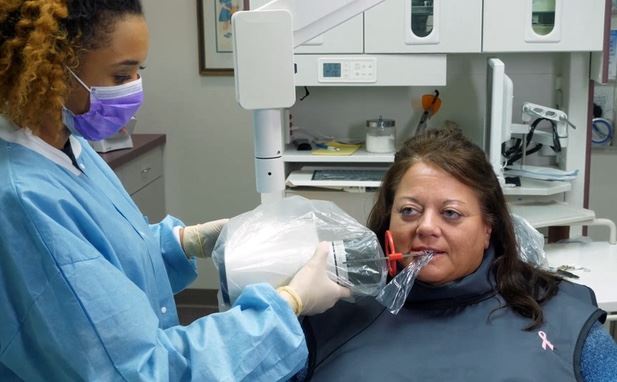

Library > Dental Assisting > Dental Radiography > Dental Radiology 1 - Parallel Technique
Try Simtics for free
Start my free trialDental Radiology 1 - Parallel Technique

Materials Included:
-

-

-

-

-

Check our pricing plans here
Unlimited streaming.
This module is part of a 2-volume set. Part I of this module explains the dental assistant’s role in dental radiography procedures; including bitewing and periapical full mouth series radiographs, utilizing the paralleling technique. The paralleling technique is the most commonly used technique for exposing periapical and bitewing radiographs because it creates the most accurate representation of a tooth image. It refers to the receptor being positioned parallel to the full length (long axis) of the tooth being radiographed. The central x-ray beam is then aligned perpendicular to the tooth being radiographed. Film holding devices, such as the XCP (extension-cone paralleling) device are explained in this module, along with the 5 basic rules for performing the paralleling technique.
- Describe pre-procedure considerations for dental radiography procedures utilizing the paralleling technique.
- Describe and demonstrate the preparation for dental radiography procedures utilizing the paralleling technique.
- Understand radiation safety protocols for dental radiography procedures.
- Demonstrate the correct placement and exposure of bitewing radiographs utilizing beam alignment devices for both films and digital sensors.
- Demonstrate the correct placement and exposure of a full-mouth series of radiographs utilizing the paralleling technique, with beam alignment devices for both films and digital sensors.
- Understand the correct procedures for processing film.
- Understand concepts of mounting radiographs.
- Know the correct post-procedure considerations.
- Define and demonstrate correct recording and reporting procedures.
- Define and use related medical terminology.
- Describe clinical safety according to Occupational Safety and Health Administration (OSHA) guidelines.
- Understand the impact of the state Dental Practice Act.
- Explain the Patient Privacy Rule (HIPAA), Patient Safety Act, and Patients' Bill of Rights.
The SIMTICS modules are all easy to use and web-based. This means they are available at any time as long as the learner has an internet connection. No special hardware or other equipment is required, other than a computer mouse for use in the simulations. Each of the SIMTICS modules covers one specific procedure or topic in detail. Each module contains:
- an online simulation (available in Learn and Test modes)
- descriptive text, which explains exactly how to perform that particular procedure including key terms and hyperlinks to references
- 2D images and a 3D model of applied anatomy for that particular topic
- a step by step video demonstration by an expert
- a quiz
- a personal logbook that keeps track of all the modules the learner has studied and how long
For more details on features and how your students can benefit from our unique system, click here.





